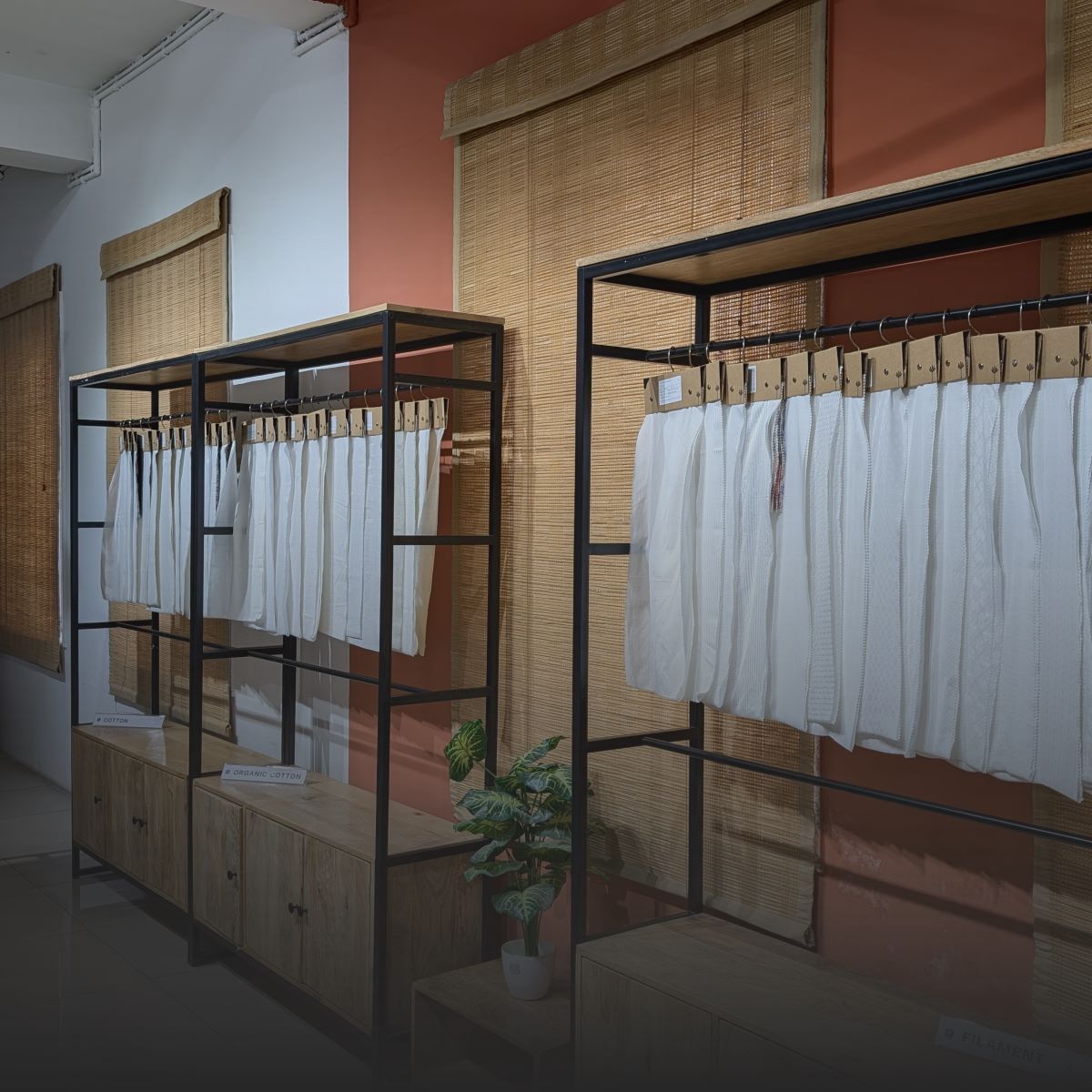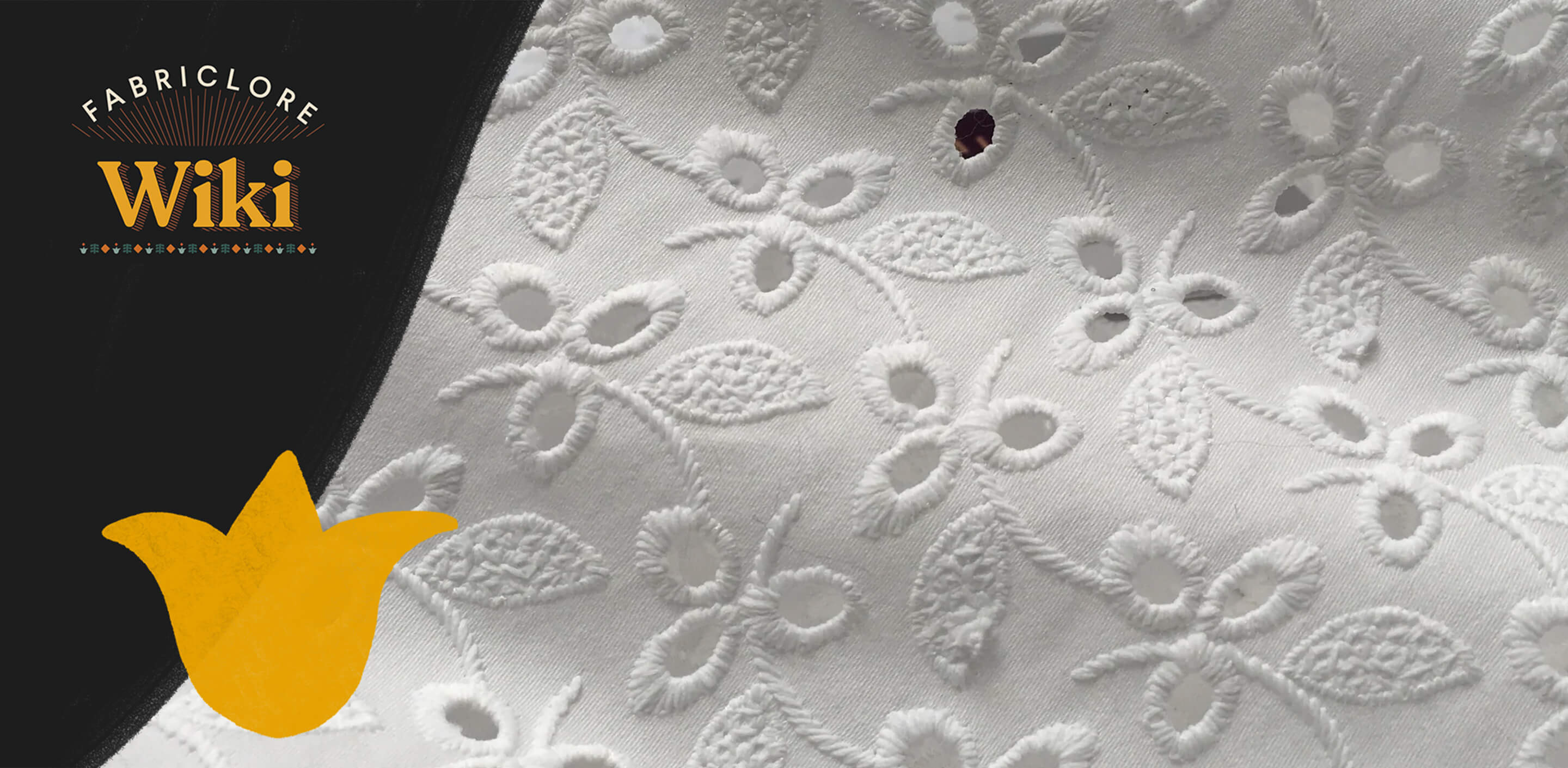In an era where performance, cost-efficiency and story matter, "wool blend fabric" delivers a powerful combination of heritage feel and modern practicality. For designers, private labels, sourcing teams and textile buyers, understanding wool blends—from fibre composition, weaves, technical specifications, to sourcing workflows—is key to building premium collections that perform and scale.
What Is Wool Blend Fabric?
Definition & origin
A wool blend fabric is any textile made from natural wool combined (blended) with other fibres—either natural (cotton, linen, silk) or synthetic (polyester, nylon, acrylic).
Blending wool with other fibres began gaining traction in the 20th century to improve durability, ease of care and cost-effectiveness.
What this means for sourcing: "wool blend" covers a broad category of fabrics with varying proportions of wool and partner fibres, weave types, finishings and end uses.
Basic characteristics
- Typically contains anywhere from ~30% to 70% wool content (though percentages vary).
- The partner fibre (cotton, polyester, silk, linen, etc) is selected to add certain traits (stretch, durability, lightness, breathability).
- Available in woven or knit constructions, suiting fabrics, outerwear fabrics, apparel blends, and upholstery blends.
- Provides a combination of wool's natural benefits (warmth, texture, resilience) with added features from the other fibre(s).
Key Characteristics of Wool Blend Fabrics

Here's a short paragraph followed by bullet points of core properties to help designers & sourcing teams understand what to look for.
Wool blend fabrics merge the natural performance of wool (insulation, wrinkle-resistance, drape) with additional functional or cost-benefit features from blending fibres. The result is a textile that offers balanced hand-feel, structure, visual depth, and better manufacturability for modern apparel and value-driven brands.
Core properties:
- Thermal insulation and natural moisture-wicking from wool fibres.
- Improved strength, wrinkle resistance or lighter weight thanks to added fibres (e.g., wool-polyester blends).
- Enhanced durability or abrasion resistance when synthetic fibres are used in the blend.
- Better cost efficiency: wool blends often cost less than 100% wool while maintaining a premium appearance.
- Versatility in end-use: from tailored suiting, outerwear, and knitwear to mid-luxury fashion.
- Finish and care behaviour is influenced by both wool content and the partner fibre; need to verify processing accordingly.
Benefits for Apparel Brands & Textile Buyers

For sourcing professionals, private-labels, small brands and larger apparel operations, wool blend fabrics offer strategic advantages.
Brand & sourcing advantages
Using wool blend fabrics allows brands to combine heritage appeal (wool) with modern demands (ease, cost, functionality). Whether building tailored suits, casual jackets, outerwear, or fashion blends, wool blends let you position with credibility and performance.
Direct benefits:
- Elevated brand perception: wool content evokes premium quality, wool-blend allows storytelling of "modern heritage".
- Cost-effective luxury: blending with synthetic or natural partner fibre helps manage cost without entirely sacrificing premium feel.
- Extended seasonality: depending on composition, wool blends can cross seasons (spring/fall) or lighten weight for warmer weather.
- Manufactured-friendly: better control of shrinkage, durability, and wash behaviour compared to raw wool alone.
- Wide category application: suits, coats, sports jackets, knitwear, blended knits, premium casualwear.
- Customisation potential: different blend ratios, partner fibres, finishes, textures (e.g., wool-linen, wool-silk, wool-poly).
- Better supply-chain flexibility: mills often offer wool blend runs with lower MOQ than some luxury pure wool wools; more scope for small-batch or capsule.
- Comparison Table – Wool Blend vs Related Fabrics
A handy table to help sourcing teams and designers identify when a wool blend is the right fabric choice compared to alternatives.
|
Fabric |
Key Traits |
Best Use |
|
Wool blend fabric |
Mixture of wool + other fibre; cost-balanced; durable |
Tailored suiting, outerwear, multipurpose jackets |
|
100% Wool fabric |
Natural wool only; premium feel; potentially higher cost |
Luxury suiting, high-end outerwear, bespoke lines |
|
Other blends (e.g., cotton-poly) |
Non-wool blends; lower cost, less warmth, fewer heritage cues |
Fast fashion, budget segments, non-premium usage |
Types / Constructions Available
Wool blend fabrics vary a lot in composition, weave/knit structure, finish, weight, and use. Understanding the variants helps brands pick correctly.
Table – Wool Blend fabric variants
|
Type |
Typical Composition / Construction |
Texture & Appearance |
Common Uses |
|
Wool-Polyester Blend |
e.g., 70% wool + 30% poly |
Smooth worsted, less prone to wrinkle |
All-weather suits, business jackets |
|
Wool-Cotton / Wool-Linen Blend |
e.g., 60% wool + 40% cotton or linen |
Lighter hand, “breathable” look |
Summer tailoring, unstructured jackets |
|
Wool-Silk / Wool-Mohair Blend |
e.g., wool + fine silk/mohair |
Sheen, luxe texture, soft hand |
Evening wear, luxury sportcoat |
|
Stretch Wool Blend |
Wool + Elastane / Spandex |
Slight stretch, modern fit |
Tailored trousers, slim fit sportcoats |
|
Heavy Wool Blend for Outerwear |
High wool content + poly/acrylic for durability |
Dense texture, heavyweight fabric |
Overcoats, heavy jackets, caps |
GSM / Weight Guidance & Technical Specification
When sourcing wool blend fabrics, weight (GSM or oz/yd²), yarn count, weave/twill type, finish and technical specs matter a lot in performance, cost and manufacturing.
Weight defines suitability for purpose (summer vs winter), drape vs structure, and cost impact. For wool blends, specifying correct weight and other specs ensures the garment performs, meets brand quality, and fits production expectations.
Weight Guidance – Table
|
GSM / oz/yd² |
Indicative Use |
Notes |
|
~200-260 gsm (≈6-7 oz/yd²) |
Lightweight wool blend for spring/summer suits or jackets |
Lighter structure, less insulation |
|
~260-320 gsm (≈7-9 oz/yd²) |
Mid-weight wool-blend for general purpose suiting/jackets |
Balance of drape, warmth, cost |
|
~320-400+ gsm (≈9-11 oz/yd²) |
Heavier wool-blend for outerwear, winter tailoring |
More structure, heavier hand, cost impact |
Additional specs to define:
- Wool % content and partner fibre %.
- Yarn count (e.g., worsted 80s/2 wool) and twist.
- Weave type: twill, herringbone, plain, flannel.
- Finish: water-resistant, crease-resistant, stretch finish.
- Width of fabric (140-150 cm common).
- Shrinkage tolerance, colour fastness, pilling resistance.
How Wool Blend Fabric Is Made – Technical Process

Understanding manufacturing helps sourcing teams evaluate mill credibility, quality control and cost drivers.
Wool blend fabrics are produced via spinning, weaving/knitting and finishing. The blend of fibres introduces additional steps (fibre preparation, compatibility processing) and finishing may be more complex to optimise hand-feel, performance and appearance.
Production Steps:
- Fibre selection: wool fibre (sheep, alpaca, etc) plus partner fibre (polyester, cotton, linen, silk).
- Blending/spinning: fibres mixed or combined at the yarn stage to create uniform yarn composition; or fibre-blended yarns.
- Weaving/knitting: fabric manufactured using a chosen structure (twill, plain, herringbone, knit).
- Finishing: processes such as fulling, brushing, water-repellent coating, wrinkle-resistant finishes, and stretch finishes.
- Quality control: check composition, GSM, width, shrinkage, colour consistency, Pilling, seam performance.
-
Packaging and dispatch: roll-length, lab reports, export compliance.
Applications by Category
Here is how wool blend fabrics are applied across different product categories with recommended variants and key benefits.
|
Category |
Recommended Wool-Blend Variant |
Key Benefits |
|
Suits & Tailoring |
Mid-weight wool-poly or wool-cotton 260-320 gsm |
Structure + durability + cost-balance |
|
Outerwear (Coats/Jackets) |
Heavy wool-blend 320-400 gsm+ with poly/acrylic |
Warmth, durability, heritage aesthetic |
|
Casual Sportcoats / Bonus |
Wool-linen or wool-cotton blends 220-280 gsm |
Breathability, relaxed look, resort or warm seasons |
|
Knitwear / Structured Tops |
Wool-silk or wool-mohair blends |
Luxury feel, soft hand, premium presentation |
|
Small Batch/Fashion Runs |
Wool-blend with custom finishes, prints |
Brand differentiation, textured visuals |
Sourcing & Specification Checklist
For brands and textile buyers sourcing wool blend fabrics, a structured workflow and detailed checklist are a must.
Because wool blend fabrics vary so widely (by blend content, weave, finish), it is imperative to define and approve specs early, test swatches, and verify performance before bulk production. Following a consistent sourcing protocol helps minimise risk and align with brand standards.
Checklist:
- Fibre composition and % of wool vs other fibres.
- Yarn count, twist, blend type.
- Weight/GSM, width, acceptable tolerance.
- Weave/knit structure (plain, twill, herringbone, flannel, etc.).
- Finish required: water-repellent, wrinkle-resistant, stretch.
- Swatch evaluation: feel, drape, colour, texture.
- Lab testing: shrinkage, pilling resistance, abrasion, colour fastness.
- MOQ, roll length, lead time, repeat order consistency.
- Packaging, export readiness, roll labelling.
- Care instructions will be documented for the garment later.
Care & Maintenance
Although wool blend fabrics are generally easier to care for than 100% wool, they still require appropriate handling to maintain appearance and performance.
The presence of wool in a blend means heat, abrasion and moth damage remain possible. The partner fibre may ease maintenance, but doesn't eliminate care requirements. Proper care prolongs lifespan and upholds brand value.
Care tips:
- Always refer to the specific fibre blend (e.g., wool-poly may allow machine wash, wool-linen may require dry-clean).
- Use cold or hand wash for blends with higher wool content; avoid tumble drying high-wool blends.
- Use a steam iron or low heat setting to avoid damage to wool fibres and synthetic components.
- Prevent pilling and abrasion: turn garments inside out when washing, use soft laundry settings.
- Store in breathable garment bags; for wool‐rich blends, avoid moth exposure
- Spot clean stains promptly; for outerwear blends, maintain waterproofing if applicable.
Pros & Cons (Trade-Offs)
No fabric category is perfect—wool blend fabrics also come with trade-offs to consider.
Advantages:
- Good balance of premium feel (wool) with ease/cost (other fibres).
- Enhanced durability, wrinkle resistance and ease of care compared to many pure wool fabrics.
- Flexible sourcing options: Blend ratios, partner fibres, finishes allow adaptation to cost and performance goals.
- The "wool blend" label carries premium appeal while enabling competitive pricing.
Potential drawbacks:
- The "premium feel" of wool can be diluted if the blend ratio is too low or the partner fibre dominates.
- Some blends may compromise natural fibre benefits (warmth, breathability) if synthetic content is high.
- Care instructions may still be more demanding than pure synthetics.
- For heritage or ultra-luxury positioning, pure wool may still be preferred; blends may be viewed as "lesser" by some customers.
- Blend fabrics may require more rigorous QC: different fibres behave differently in dyeing, finishing and wear.
Trends & Innovations
To stay ahead, sourcing and design teams should be aware of innovations shaping the wool blend fabric market.
Key trend areas:
- Sustainable wool blends: Incorporation of recycled polyester, traceable wool, and low-impact finishing treatments.
- Technical performance blends: Wool + stretch (elastane), wool + moisture-wick synthetics, wool blends used in activewear/hybrid tailoring.
- Blended heritage/fashion mixes: Wool-linen, wool-silk, wool-cotton blends are gaining traction for seasonal wear and "luxury casual".
- Prints, textures & micro-finishes: Wool blends used for printed suiting, textured weaves (bouclé, tweed style) in blends for depth.
- Small-batch / capsule runs: Brands using wool blends with unique finishes or heritage blends to differentiate, while maintaining cost control.
Final Thoughts

Wool blend fabric is a strategic component in modern apparel sourcing: it bridges the gap between luxury and practicality, heritage and scalability, performance and aesthetics. For brands, understanding fibre blend ratios, weave structure, finish, weight/GSM and sourcing nuances is essential to leverage wool blends effectively.
By aligning garment design briefs, technical specifications (blend %, weave, GSM, finish), supplier capability, and QC workflows, brands and textile buyers can unlock the potential of wool blend fabrics—creating high-quality, market-ready products that deliver both brand story and performance.
FAQs
Q1. What Is The Typical Composition Of Wool-Blend Fabric?
Wool blend fabrics typically include wool content from ~30% up to ~70% combined with fibres like polyester, cotton, linen, silk or nylon. The exact ratio influences feel, cost, durability and care.
Q2. Why Choose A Wool Blend Instead Of 100% Wool?
Blending wool allows brands to achieve many of the premium attributes of wool—warmth, texture, structure—while gaining improved durability, easier care, lower cost and broader end-use applicability.
Q3. What Are The Key Things To Check When Sourcing Wool-Blend Fabric?
Ensure you define wool content %, partner fibre type, weave/construction, weight (GSM), width, finish, shrinkage tolerance, and care instructions. Swatch, test, and verify supplier claims.
Q4. How Should I Care For Garments Made From Wool-Blend Fabrics?
Consult the specific blend care label, but general guidance: use a gentle wash (or dry-clean if high wool content), avoid high heat drying, use low-heat ironing or steaming, store in breathable garment bags to prevent moth damage.
Q5. Can Wool Blends Be Used For Warmer-Weather Garments?
Yes. Wool-cotton or wool-linen blends often have a lighter weight (200-260 gsm) and improved breathability, making them ideal for spring/summer tailoring or lighter jackets.
We also happen to be a magnet for suggestions, and would love to catch yours….throw us yours on hello@fabriclore.com




